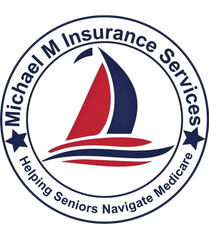Which option is right for you in 2026?
When it comes to Medicare coverage, two paths stand out:
- Original Medicare with a Supplement (Medigap) + Part D drug plan
- Medicare Advantage (Part C)
Both options are approved by Medicare, but they work very differently. Understanding the trade-offs is key to choosing coverage that fits your health, budget, and peace of mind.
With Original Medicare, you have:
- Part A (Hospital) and Part B (Medical) coverage from Medicare itself
- A Supplement (Medigap) policy to help cover deductibles, copays, and coinsurance
- A stand-alone Part D plan for prescription drugs
Option 1: Original Medicare + Supplement
Advantages
- Freedom to see any doctor or hospital nationwide that accepts Medicare
- Predictable costs, since most out-of-pocket expenses are covered by the supplement
- No network restrictions — great for travelers or snowbirds
- Long-term stability, since Medigap benefits don’t change from year to year
Disadvantages
- Higher monthly premiums (Medigap + Part D) compared to many Advantage plans
- Separate policies to manage (Medicare + Medigap + Part D)
- Prescription drug costs can be higher depending on the Part D plan and the medications you take
- Underwriting may apply if you switch into Medigap later, unless you qualify for guaranteed issue
Best for: People who want flexibility, travel frequently, or prefer predictable costs even if
premiums are higher.
Option 2: Medicare Advantage (Part C)
Medicare Advantage plans are offered by private insurance companies. They bundle your Part A, Part B, and usually Part D into one plan .
Advantages
- All-in-one coverage with medical and drug benefits (and often extras like dental, vision, and hearing)
- Lower or even $0 monthly premiums in many areas
- Annual out-of-pocket maximum (MOOP) that Original Medicare does not have
- Added benefits such as gym memberships, transportation, or over-the-counter allowances
- Prescription drugs often cost less compared to some stand-alone Part D plans
Disadvantages
- Network restrictions —you may have to use certain doctors, hospitals, or pharmacies
- Prior authorization may be required for tests, procedures, or medications
- Benefits can change each year , which may affect costs or provider access
- Out-of-pocket costs can be higher if you have a bad health year
Best for: People who want lower premiums, are comfortable with provider networks, and
like extra perks.
| Feature | Original Medicare + Supplement | Medicare Advantage |
|---|---|---|
| Provider Access | Any Medicare provider nationwide | Network-based (HMO/PPO) |
| Monthly Costs | Higher premiums, lower out-of-pocket | Often lower premiums, but more cost-sharing |
| Prescription Drugs | Separate Part D plan (can be costly) | Usually included; sometimes lower drug costs |
| Travel Flexibility | Excellent (anywhere in U.S.) | Limited to network area, emergency coverage only outside |
| Extra Benefits | None beyond Medicare; Medigap covers gaps in Original Medicare | Often includes dental, vision, hearing, fitness |
| Annual Changes | None beyond Medicare — Medigap benefits are generally stable | Plan benefits, networks, and costs can change yearly |
Key Differences at a Glance
What’s New in 2026
- Medigap premiums are rising in many areas, with some carriers projecting double-digit increases.
- High Deductible Plan G is gaining popularity for those who want the freedom of Medigap with lower monthly premiums.
- Medicare Advantage plans continue to expand “extra benefits” like food cards, utility help, and transportation — though availability depends heavily on your county.
- Prescription coverage remains a big differentiator: some Advantage plans may offer more competitive drug pricing than stand-alone Part D plans.
Key Takeaway
There’s no one-size-fits-all answer. Both Original Medicare + Supplement and Medicare Advantage can be great choices — but for different people.
- If you value freedom, predictability, and nationwide access, a Supplement may be the best fit.
- If you want lower premiums and potentially lower medication costs , Medicare Advantage could be the better option — especially if you aren’t using your Supplement very much.
The best step? Sit down with your broker. By reviewing your doctors, prescriptions, and budget together, you can find the option that fits your life today — and keeps you confident
heading into 2026.

